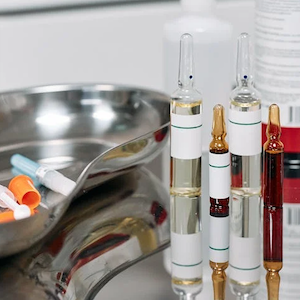Discrepancies between clinical and pathological findings seen at renal biopsy in rheumatological diseases

Submitted: 23 April 2023
Accepted: 4 July 2023
Published: 18 September 2023
Accepted: 4 July 2023
Abstract Views: 1197
PDF: 495
Publisher's note
All claims expressed in this article are solely those of the authors and do not necessarily represent those of their affiliated organizations, or those of the publisher, the editors and the reviewers. Any product that may be evaluated in this article or claim that may be made by its manufacturer is not guaranteed or endorsed by the publisher.
All claims expressed in this article are solely those of the authors and do not necessarily represent those of their affiliated organizations, or those of the publisher, the editors and the reviewers. Any product that may be evaluated in this article or claim that may be made by its manufacturer is not guaranteed or endorsed by the publisher.
Similar Articles
- Y. Emad, T. Gheita, H. Darweesh, P. Klooster, R. Gamal, H. Fathi, N. El-Shaarawy, M. Gamil, M. Hawass, R.M. El-Refai, H. Al-Hanafi, S. Abd-Ellatif, A. Ismail, J. Rasker, Antibodies to extractable nuclear antigens (ENAS) in systemic lupus erythematosus patients: correlations with clinical manifestations and disease activity , Reumatismo: Vol. 70 No. 2 (2018)
- S.L. Bello, L. Serafino, C. Bonali, N. Terlizzi, C. Fanizza, C. Anecchino, G. Lapaldula, Incidence of influenza-like illness into a cohort of patients affected by chronic inflammatory rheumatism and treated with biological agents , Reumatismo: Vol. 64 No. 5 (2012)
- N. Romano, A. Fischetti, V. Prono, S. Migone, F. Barbieri, C. Pizzorni, G. Garlaschi, M.A. Cimmino, Plantar pain is not always fasciitis , Reumatismo: Vol. 69 No. 4 (2017)
- M. A. Marie, R. E. Abu Khalil, H. M. Habib, Urinary CXCL10: a marker of nephritis in lupus patients , Reumatismo: Vol. 65 No. 6 (2013)
- G. Bajocchi, A. Cavazza, Histopathology of vasculitis , Reumatismo: Vol. 70 No. 3 (2018): Monographic issue on Histopathology in Rheumatic Diseases
- G. Minetti, B. Bartolini, G. Garlaschi, E. Silvestri, M. A. Cimmino, Rheumatoid trigger wrist , Reumatismo: Vol. 67 No. 3 (2015)
- Y. Ragab, M. Nabih, I. Aly, A. Kamal, M. A. Abd-Allah, R. El-Refai, Y. Emad, A. El-Naggar, N. El-Shaarawy, J.J. Rasker, Magnetic resonance imaging features of hip disorders in an Egyptian pediatric population , Reumatismo: Vol. 67 No. 2 (2015)
- O. Zengin, M. E. Onder, M. A. Sarica, I. H. Turkbeyler, G. Kimyon, Z. H. Demir, H. Yildiz, B. Kisacik, A. M. Onat, Systemic vasculitis in a patient with rhupus syndrome , Reumatismo: Vol. 67 No. 4 (2015)
- D. Jain, H.K. Aggarwal, V. Kaverappa, S. Dhayia, P. Jain, S. Yadav, Anti-dsDNA negative and anti-Ro positive lupus nephritis: a report of a rare case , Reumatismo: Vol. 65 No. 6 (2013)
- C.C. Macía-Villa, I. Sanchez-Lite, J. Medina-Luezas, Slipped capital femoral epiphysis in adults: case report and review of literature , Reumatismo: Vol. 68 No. 1 (2016)
You may also start an advanced similarity search for this article.

 https://doi.org/10.4081/reumatismo.2023.1586
https://doi.org/10.4081/reumatismo.2023.1586





